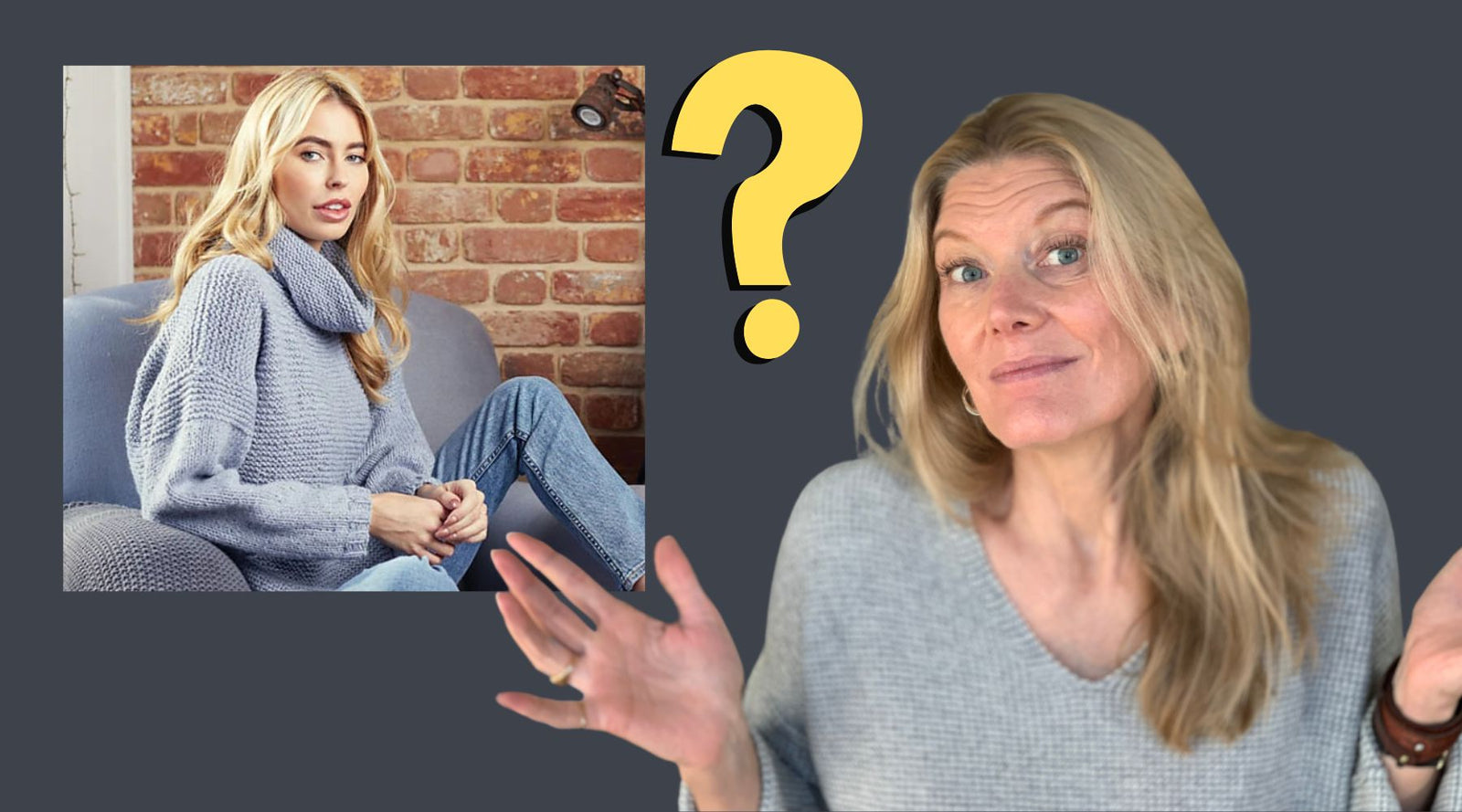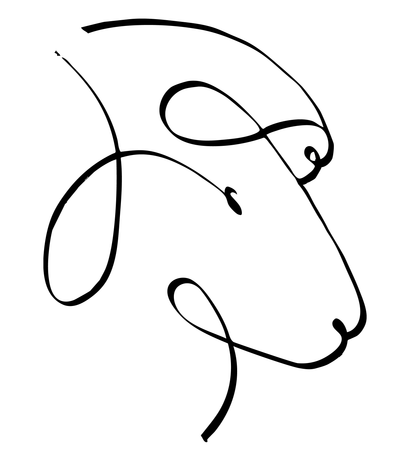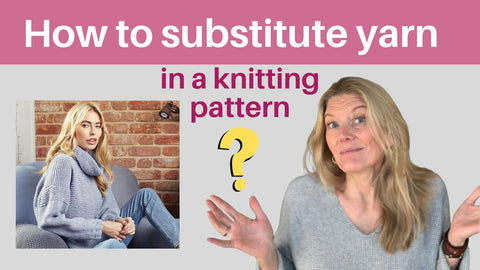Free shipping on all domestic orders over $150
Free shipping on all domestic orders over $150
Shop
Add description, images, menus and links to your mega menu
A column with no settings can be used as a spacer
Link to your collections, sales and even external links
Add up to five columns
Add description, images, menus and links to your mega menu
A column with no settings can be used as a spacer
Link to your collections, sales and even external links
Add up to five columns

How to substitute yarn for knitting
March 18, 2024 4 min read 3 Comments
You can't always get what you want
But if you try sometimes, well, you just might find
You get what you need
Often we find a beautiful pattern, but the yarn the designer used is discontinued or not available for some reason. Or maybe you don’t like the yarn. Or maybe, you want a summer sweater, but the pattern is designed for wool.
That’s the situation I found myself in with the Luna Sweater. It’s a beautiful sweater, originally designed for Felted Tweed Aran, and someday I will probably knit one in Felted Tweed Aran, but right now, I want a warmer weather garment.
I began considering my options and thought I’d bring you along with me in the process.
How do you substitute yarn in knitting?
I’ve talked many times about how you can’t force a yarn to be something it is not. Don’t try. That way madness lies. When you are substituting yarn, you have to choose something that is meant to behave like the yarn it’s standing in for.
Although some designers give you the impression that their yarn is spun by virgins from unicorn hair, there is no magic in one yarn.

The truth is that yarns are largely interchangeable so long as you know what’s important about what the designer has chosen for the pattern you're considering.
Here are some key considerations’
- Gauge: The most important consideration is the gauge of the yarn. The pattern is designed at a specific gauge and uses a particular yarn to get that gauge. It’s not enough to look at the gauge of the pattern and choose a yarn that knits at that gauge
You have to look at the gauge of the original yarn. Often designers will knit a yarn at a gauge other than its recommended gauge to create a fabric with a certain kind of structure. We often see this with finer weight yarns knit at a looser gauge to create a fabric with a lot of drape. So, just because the pattern says it’s knit at a gauge of 20 stitches per 4 inches, doesn’t necessarily mean that it needs a worsted weight yarn.
- Texture The surface appearance of the yarn is crucial too. A yarn with too much texture can obscure a complicated stitch pattern. Conversely, a yarn with a smooth texture will not give the sculptural effect of a boucle or a loose chainette.
- Elasticity Certain patterns depend on the bounciness of the yarn to allow it to hold its shape. If your pattern is designed for a high twist merino, you cannot use an alpaca silk blend instead. I mean you could, but the fabric would not have the structure the designer intended the fabric to have.
- Physical weight Fiber composition as well as modern construction methods have changed the game when it comes to the weight of yarn. If a pattern is designed for a tube yarn and you substitute a plied yarn, your garment could end up weighing much more than you expected and look very different. Look at the physical construction of the original yarn and see what it is. It’s also a good idea to calculate the grams per yard of the original yarn and see how it compares to the yarn you’re considering.
Swatching is key
As I am fond of saying, Whatever the question, the answer is almost always; you have to swatch it and see
Once you’ve made an informed decision regarding your substitute yarn candidates, it’s essential that you swatch the yarn at the required gauge, in the pattern stitch.
A big swatch
You need to see how that yarn will behave at close to sweater scale. I’m not saying you have to cast on the whole back, but you should have more than just 4 inches. A small swatch doesn’t fully replicate what will happen when you have a full sweater’s weight of fabric pulling down on the yarn.
A fabric that seems perfectly well-behaved in a 4” swatch might sag something fierce when you have a full 20” of width and 24” of length working against gravity.
Work your swatch, and hold it up as if you were wearing it. Does it droop or sag?
I am thinking particularly about Luna, which is mostly garter stitch. It needs a yarn that isn’t going to stretch out of shape when you wear it. That means a lightweight yarn like the original Felted Tweed Aran, or something with some bounce that will stand up to gravity.
I have some examples that I’ve knit up for Luna. Join me on YouTube so you can see several other yarns that will work perfectly, as well as a couple that won’t.
I look forward to seeing you there. Feel free to post any questions you have in the comments here, and I’ll answer them either live on YouTube or here in the comments.
Warmly,
Ellen
Watch the video here
3 Responses
Ellen
March 19, 2024
Thanks, Susan! Glad it was helpful!
Susan Dyer
March 19, 2024
As always, very useful information. Love the Mick quote!



Betty Knight
April 09, 2024
Can I still see the video on choosing the correct yarn? I missed it on Facebook